






Preschool or Day Care?
Questions every family should consider when choosing between the two Climate Play in Action
Engaging activities help parents bridge a tough topic to tackle
GREAT KIDS Liar! Liar!
Effectively responding to kids’ fibs, tall tales and other untruths
Its mountain backdrop and historic downtown make Snoqualmie a worthy daydestination
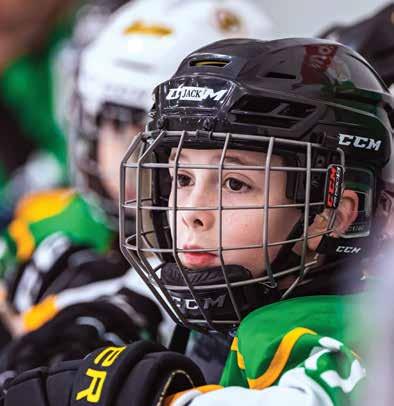
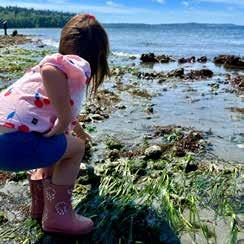
make camp great

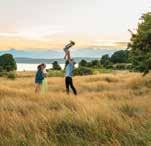

Let the experts do the planning, setup and, most importantly, the cleanup!


Point Defiance Zoo & Aquarium. We can always find something to do there — rain or shine — and my kids love the playground.

We spent a lot of time at Golden Gardens when my boys were little. I’d bring some snacks and a blanket, and they would play for hours.

Hands On Children’s Museum in Olympia is the best! For free fun, Frontier Park and Puyallup Pavilion have some pretty cool playgrounds, too.
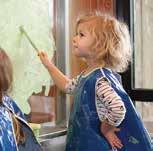

EDITORIAL
MANAGING EDITOR
Allison Sutcliffe
SENIOR EDITOR Kristin Leong
ASSOCIATE EDITOR Kari Hanson
FAMILY FUN EDITOR
Meredith Charaba
CALENDAR EDITOR
Julie Dodobara
COPY EDITOR
Sunny Parsons
CONTRIBUTORS
Gemma Alexander, Jackie Freeman, Amber Guetebier, Krista Tsai
DIGITAL MARKETING
MARKETING DIRECTOR
Lindsey Carter
EMAIL MARKETING SPECIALIST Devon Hammer
SOCIAL MEDIA SPECIALIST
Brooke Collins
ADVERTISING SALES + PARTNERSHIPS
DIRECTOR OF COMMUNITY
PARTNERSHIPS + ADVERTISING SALES
Jessica Collet
SENIOR ADVERTISING AND PARTNERSHIPS MANAGER
Ida Wicklund
ADVERTISING SALES AND PARTNERSHIPS MANAGER
Shannon Johnson
EVENTS + COMMUNITY
PARTNERSHIPS SPECIALIST
Brenna McCown
CLIENT SERVICES + DESIGN COORDINATOR
Angela Goodwin
ADVERTISING CLIENT SERVICES SPECIALIST
Mallory Dehbod
DIGITAL ADVERTISING + MARKETING SPECIALIST
Taryn Weiner
PRODUCTION COORDINATOR Tamryn Nell
ART + PRODUCTION
SENIOR DESIGNER Amy Chinn
ADMINISTRATION
BUSINESS MANAGER Carolyn Brendel
OPERATIONS ASSISTANT Erika Widjaja
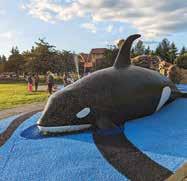
Crossroads playground and splash pad in Bellevue. It’s fun year-round for kids, but it’s magical in the summer with that enormous spouting orca!
We love to play at Imagine Children’s Museum! We discover something new with every visit.
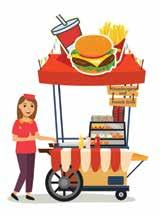
Saltwater State Park. There is such a nice beach and lots of great trails, plus plenty of driftwood to build forts. Added bonus — snack bar!
Gene Coulon. It’s got a great playground, beach and walkways for miles. There’s even an Ivar’s for fish ‘n’ chips, which is always a favorite on a sunny day. — Julie Dodobara, calendar editor

PARENTMAP EDITORIAL ADVISORY BOARD
Benjamin Danielson, M.D. CLINICAL PROFESSOR, UW SCHOOL OF MEDICINE PRACTICING PHYSICIAN, UW MEDICINE
Joan Duffell RETIRED EXECUTIVE DIRECTOR, COMMITTEE FOR CHILDREN
John Gottman, Ph.D. THE GOTTMAN INSTITUTE PROFESSOR EMERITUS, UNIVERSITY OF WASHINGTON
Laura Kastner, Ph.D. PSYCHIATRY + BEHAVIORAL SCIENCES, UNIVERSITY OF WASHINGTON
Bea Kelleigh VICE PRESIDENT, DOVETAILING, LLC
Yaffa Maritz, M.A. FOUNDER, LISTENING MOTHERS + COMMUNITY OF MINDFUL PARENTING
Daniel J. Siegel, M.D. EXECUTIVE DIRECTOR, MINDSIGHT INSTITUTE
CONTACT
INFORMATION
Advertising information 206-709-9026 or advertising@parentmap.com Fax 206-709-9031
Calendar submissions calendar@parentmap.com
Editorial submissions editor@parentmap.com
Distribution distribution@parentmap.com
Administration 206-709-9026, parentmap.com
Subscriptions subscriptions@parentmap.com
Subscription rate 1 year: $12
ParentMap is published monthly.
PMB #190, 7683 S.E. 27th St., Mercer Island, WA 98040
All rights reserved; reproduction in whole or part without permission is prohibited. © ParentMap 2024 • printed in Oregon







University of Washington researchers have created a snowy VR world for teens, featuring activities such as rock stacking and painting, to help reduce stress. A study of 44 Seattle teens showed they voluntarily used the VR tech twice a week on average and felt less stressed and in better moods afterward. The research, published in JMIR XR and Spatial Computing, offers a glimpse into a futuristic way to support youth mental health.

Old dads can’t be stopped
Young male blue tit birds are having a hard time playing the field, not due to inexperience but because they’re outmatched by their older, more seasoned counterparts. From 2007 to 2021 researchers at the Max Planck Institute for Biological Intelligence in Germany tracked these birds using DNA tests. When they temporarily removed the older males in 2022, suddenly 33 percent of the young males became successful dads, up from a mere 13 percent. Looks like in the bird world, the sky’s the limit with a little wisdom and age.

Senate Bill 5462, was recently approved by the Wash. Legislature. The bill requires that schools update curriculum to include LGBTQ+ histories, perspectives and contributions. This move aligns Washington with six other states, including Oregon and California, making classrooms more inclusive for all students and teachers. The bill now awaits Governor Inslee’s signature to become official.
Bring on the breeze
Tomato plants will be thrilled with a scorcher of a summer, but if you’re dreading the heat, there may be hope. Lowincome families in Washington can chill out with free air conditioners. Thanks to a boost in federal funds, eligible families can snag a voucher for an AC unit from Amazon. The income limit varies by family size — it’s $45,000 for a family of four in King County. Households can apply through local organizations such as HopeLink and Pierce County Human Service. Applying early is recommended.

Washington youth are bouncing back
Based on feedback from over 217,000 Washington students in grades 6–12, the 2023 Healthy Youth Survey shows healthier behaviors, improved mental health and increased social support. Among 10th graders, only 8–9% reported that they currently vape, drink alcohol or use cannabis. Mental health is also improving but still concerning, with 30% reporting persistent depressive feelings.

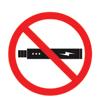


It’s not just game bros
A Pew Research survey of over 1,400 U.S. teens found that 85% of teens play video games, with 41% playing daily. Nearly all boys (97%) and about three-quarters of girls are gamers, but boys are more likely to identify as such (62% vs. 17%). Over half of the respondents say gaming boosts problem-solving skills and gives them a chance to hang out with friends, while 41% admit games also get in the way of sleep.

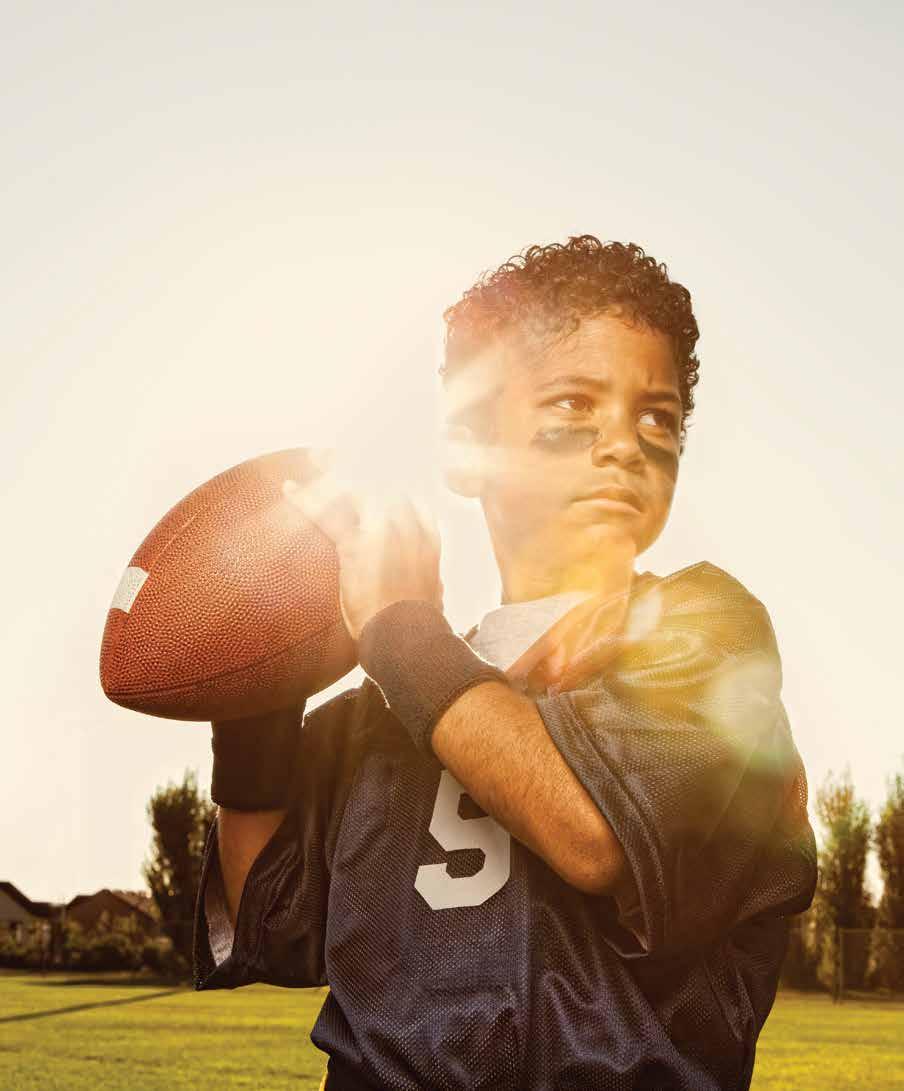

By Kristin Leong
For Jennifer Jackson, a Puyallup mom of three and a second-grade teacher, school comes before sports, but it’s a close race.
Jackson has two 12-year-old daughters, Madisyn and Zoe, who are cheerleaders, and a 10-year-old son, Mason, who plays football. Jackson adopted Zoe in November 2019.
Jackson’s involvement with youth sports began in 2018 when Madisyn started cheering for the Benson Bruins Junior Football and Cheer program in Renton at the age of 6. That’s when Jackson began volunteering to help the team with snacks and practice supervision. At the time, Zoe was undergoing hemodialysis for endstage renal disease. Her kidneys could no longer adequately filter waste products and excess fluids from her blood. This condition is extremely rare in children.
The following season, a kidney transplant for Zoe brought new hope to the Jackson family, and it meant that Zoe would be able to join her sister on the cheer team,
since the family would no longer have to be at the hospital four times a week. Also in 2019, Mason started playing football at the age of 5, and Jackson continued to volunteer as a team mom. All the while, Jackson was also teaching and traveling to Portland twice a week with the kids for Zoe’s treatments.
Jackson was raised by her aunt in South Seattle, together with eight other children. While there wasn’t always money for sports or extracurriculars, she says she was able to be part of the drill team in middle school and the dance team in high school. Despite money being tight, Jackson says her aunt always found a way.
For today’s parents, perhaps even more so than for any previous generation, balancing family life, professional responsibilities, and the time and financial demands of youth sports requires superstar-level organization and compromise. Expensive team fees, equipment tracking and hauling, and late nights and long weekends of practices

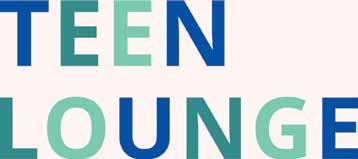
continued from page 9
FEATURE LIFE LESSONS and games that require endless schedule coordination are par for the course.
“Some days you have it — the meals are prepped, kids are in good spirits, all the work things are going well — and some days you just don’t,” Jackson admits candidly. “Some days someone didn’t get enough sleep or cleats were left at the other parent’s house. And we’re eating out again! It is in those moments, however, that you breathe deep and find your people. The other super moms on your team [are the ones] who you can lean on, laugh with and have a mutual understanding that this sports mom life is not for the faint of heart.”
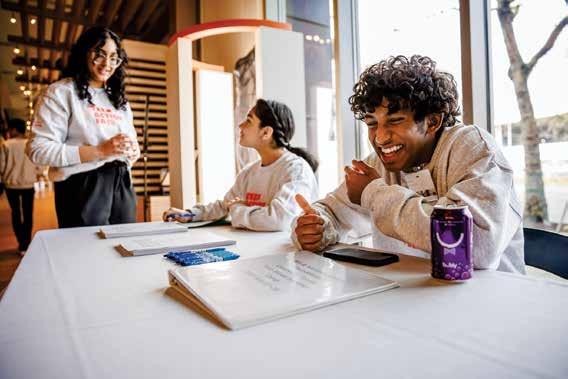
Despite the challenges and occasional chaos, Jackson says she wouldn’t trade her family’s athletic lifestyle for anything. She and her kids find strength in their community of fellow sports families that are right there with them for all of the wins, loses and logistics.
During one of the last games of that 2019 season with all three kids on the field, the strength of that community was put to the test. Zoe didn’t feel well that evening while cheering. As she walked into the stands to rest next to her mom, she began to have a seizure.
As Jackson caught her daughter, several of the other moms in the stands jumped into action, grabbing blankets to lay Zoe on the stands and calling 911. While Jackson and Zoe were taken to the hospital, other families made sure that Madisyn and Mason were taken care of until they returned. “This is a testament to the village you cultivate as you sit at practices and games cheering on each other’s children and sharing in their success and losses,” Jackson reflects.
The values Jackson instills in her children at home and on the field are mirrored in the teaching philosophy that guides her work with students.
“I have always called myself a teacher-momma from day one,” Jackson declares proudly. She says cultivating a growth mindset and having the grit to persevere through setbacks is at the core of her classroom’s mission.


She regularly reminds her second-graders, her three kids and their teammates that when things feel diffi-
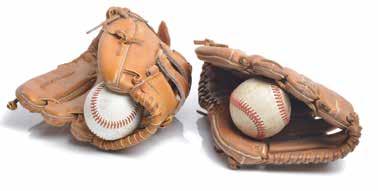
cult in the classroom, on the field or in day-to-day life, that means their brains are not just growing, they’re building muscle memory that will support them the next time things get tough. She says that matters because it’s important that kids learn not only to show up for their fellow classmates and teammates, but also for themselves in the face of challenges.
Taking a page from the playbook of one of her son’s coaches, Jackson says that she’s learned that how you do anything is how you will do everything. “If you show up for yourself,” she says, “give it your all and respond instead of react when things don’t go your way, you are on your way to being the greatest version of yourself.”
According to the Centers for Disease Control and Prevention, childhood obesity rates in the United States today are nearly three times those of the 1970s. That means more than 14 million youths ages 2–19 are obese, with children from lower-income families showing a higher rate of suffering from this epidemic.
While the exercise and nutrition education that often comes with sports involvement is a crucial part of supporting healthy kids and building positive lifelong habits, of the Puget Sound parents whom I spoke with, not a single one mentioned the physical fitness benefits of sports.
Turning a Little League loss into a coaching win
Mount Baker dad Gregg Greene is not only a sports dad to two sons — 15-year-old Max and 11-year-old Sam, who both play baseball and soccer — he’s also fostering our city’s love of America’s favorite pastime as the vice president of marketing with the Seattle Mariners.
Greene played mostly soccer and tennis growing up and says that a bad coach drove him out of Little League when he was in kindergarten. Today, Greene says that one of the reasons he volunteers as a coach

Schools with reported incidents

continued from page 11
for his sons’ sports teams is because he wants to ensure that their experiences are different from the one he remembers as a budding baseball player.
As both a coach and a parent, he says, it’s essential to him that the kids have fun every season. “My practices usually involve candy, challenges at the end to earn a dollar and sometimes even water balloon batting practice,” Greene explains, adding that he measures success as a coach by how many players want to come back and play the next year.
When asked how being involved with youth sports has benefited his family, Greene reflects that the first word that comes to mind is “community.” “We’ve made lifelong
friendships that wouldn’t have been possible without the boys’ athletics,” he says.
Greene echoes Jackson’s sentiments about the positive impact outweighing the sacrifices it requires to balance family life, work and youth sports. “It is a neverending juggling act of ride coordination, travel time, uniform washing, snacks, weather reports, practice prep, lineups, equipment purchasing and ‘Where did I put my shin guards?!’ each and every week,” Greene says with the weary but determined optimism of a team dad. “But I wouldn’t trade it for the world.”
For Kent mom and ParentMap client services and design coordinator Angela
Goodwin, when her son Jack fell in love with hockey at age 6, she didn’t know what he was getting their family into.
She admits to being naive at the time, having no idea of the time and financial commitments the sport would require. That was five years ago. Today, Jack is a serious hockey player at 11 years old, and while Goodwin acknowledges it’s not always easy to be a sports family, they’ve found their rhythm, and the benefits have been substantial.
One skill she wasn’t expecting to pick up: While on the road for games, she has mastered the art of dinner prep in a hotel room with no kitchen. Goodwin says that if you’ve never attempted grilled cheese with an iron, then you’re really missing out.
She also says she doesn’t want to sound dramatic, but seeing her son’s love and dedication to the sport grow over the years has been awe-inspiring.
As with Jackson and Greene, when reflecting on the gifts of being a sports family, fitness doesn’t come up. Instead, Goodwin emphasizes that hockey has not only taught her son how to bounce back from disappointments and the value of working collaboratively as a member of a team, but also shown her that the sport has given them invaluable opportunities for mother-son bonding.
Like the rest of our ParentMap team, Goodwin works remotely. Her digital schedule means that she is usually the parent to travel with Jack to tournaments, sometimes cracking open her laptop to send emails while sitting in the bleachers at an ice rink. “I cherish all the memories we’ve had and will continue to have experiencing these trips together,” she says.
All about relationships
Goodwin also notes that because Jack hasn’t yet found his close group of friends at school, she’s grateful that he has his teammates, to whom she hopes he’ll stay connected for the rest of his life.
According to Goodwin, the buddy benefits extend to parents in the stands, too. She says that hockey is a great way to stay social through the long, gray Pacific Northwest winters. “I could easily stay holed up in my house, but hockey doesn’t allow me to be the Netflix-binging hermit I could so easily be,” she says.
Love for the sports family life
“I’m sure some people think we’re crazy,” Goodwin jokes as she imagines what it looks like to non-sports parents who get a glimpse into the money management and scheduling magic that’s required of families with kids in youth sports.
“Maybe we are, but watching Jack follow his dream of being a hockey player has honestly been such a joy for us. His passion for the sport is really awesome to witness. And as a bonus, we’ve made amazing lifelong friendships, too.” ■
Kristin Leong is ParentMap’s senior editor. A firstgeneration scholar and originally from Honolulu, she now lives in Seattle with her wife, son, and rescue pups Radley and George. She writes a newsletter for misfits and unlikely optimists called ROCK PAPER RADIO.
Source: BBYO, March 2024
“Dirty
“Gas the Jews,” “I
Jews,” “Go back to Israel and die” are increasingly common.

By Gemma Alexander
Why you should try new things for family fun
When they are little, our kids think we know everything, and it’s easy to feel like we do. Whether we feel a need to maintain parental authority or just don’t want to disappoint their absolute trust in us, we often try to appear knowledgeable and in control at all times. But when we acknowledge the limits of our own experiences and model
openness to new ones, we do ourselves and our children a big favor. And when we approach it with the right attitude, exploring the unknown together as a family can be more fun than scary.
“When you learn together, that’s so exciting! As adults we get very stagnant in our thought processes built on the experiences we’ve had. Children don’t have that because they’re still learning. They wonder and try new things. If we, as adults, will
just sit back and wonder with them instead of always knowing, you will learn something new, too. Letting your child take the lead or learning alongside them, just being okay to sit in the unknown, will really create a new experience for you and your child,” says Jamie Bonnett, director of education at KidsQuest Children’s Museum.
Cultural horizons
We cannot raise anti-racist children without giving them broad exposure to other
cultures and traditions. It requires parents to step outside of their own comfort zone, but it can also be fun.
Koloud Tarapolsi is a children’s book author and founder of A Crafty Arab, a business providing resources to develop a better understanding of Arab culture. Her
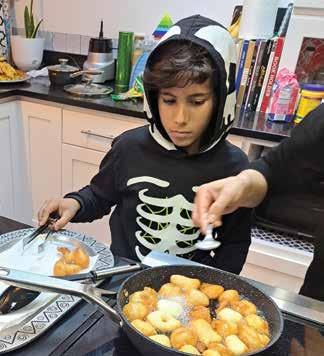
latest offering is the Cook With … an Arab series in which interested adults and kids gather in a home kitchen in Bellevue on a Sunday morning to cook and eat a meal together. The instructors may be talented home cooks or well-known restaurateurs, longtime residents or new arrivals, but all of them are refugees from Arab countries. Past classes have featured the cuisine of Egypt, Morocco, Palestine, Syria and Iraq.
“The point is not just to give money to the refugees, but also to connect people in the community to them. It’s a really nice personal experience,” says Tarapolsi. Once you’ve had brunch with an Iraqi refugee, you’ll hear news stories about violence in Iraq with a new perspective.
The chefs share information about their culture and their own lives together with their recipes, and sometimes their families join the class for the finished meal. Tarapolsi says this kind of family experience is critical to Arab food culture.
continued from page 15
“For me as a child, I remember sitting in the kitchen with all these women cooking, listening to them talk and laugh and gossip. That’s what I grew up on, cooking was a community thing. I hope that kids really see they are not taking part in just a cooking class, with somebody saying, ‘Take two teaspoons and put it in here.’ I hope the kids see this sense of community that I grew up with, with so much love. It’s called nafas — it’s the way that you put love into the food.”
Classes are open to men, women and children; participants have been as young as 11. Registration is through the A Crafty Arab Facebook page.
“As long as a child can participate and they feel comfortable doing what the adults are doing, then bring it on,” Tarapolsi says.
Experiences like Cooking With … an Arab
help parents avoid cultural appropriation and create authentic connections by engaging directly with communities. Rather than a presentation that passively observes or worse, speaks for others, an authentic cultural experience actively involves and is ideally led by members of the community and culture of interest.
Not all cultural horizons relate specifically to ethnicity. Even if you don’t know Mozart from MoPOP, giving the arts a try can have real results. Research has found connections between exposure to the arts and the development of social and emotional skills, and has shown that students who receive an arts education are better at setting and achieving ambitious goals, and are more likely to go to college. With a little planning, you can visit almost any museum in the Puget Sound area for free. Here on the left coast, attending fine arts performances does not require formal wear
(unless dressing up is part of the fun for you). Seattle Opera and Seattle Symphony, as well as Pacific Northwest Ballet (PNB) all have information on their websites to help plan your first visit.
Seattle Opera has dedicated Family Day performances, with $20 seats for anyone ages 18 and younger. In June, families can buy tickets to see professional singers perform the same 45-minute youth opera that tours local schools, and every spring, the students of the Youth Opera Project produce their own all-ages opera. Seattle Symphony’s Family Connections program invites youths ages 8–18 to attend many Seattle Symphony concerts for free with the purchase of an adult ticket. Dance is one of the most immediately accessible forms of the fine arts, and “The Nutcracker” is a popular first ballet for families. But you don’t have to wait for the winter holidays; most dance-company seasons include at least one fairy tale ballet, and the annual


















PNB School performance features students at all levels. If the theater is new to you, Seattle Children’s Theatre offers an entire season of professional theater developed for young audiences, and ParentMap identifies family-friendly shows around the region several times a year.
Nature’s horizons
The Pacific Northwest is famous for its trail-mix-crunching denizens with their REI fashion sense, so it can be a little awkward admitting you’re a total city slicker. But even if the indoors is your natural habitat,
it has been scientifically proven that people who spend time outdoors are happier, healthier, less stressed and suffer from fewer psychological problems than those who do not. Fortunately, we live in one of the world’s most beautiful places, and it’s not hard for even the most staunchly urban family to spend some time with Mother Nature. You might start by seeking out urban nature experiences, checking the ParentMap calendar for guided nature walks, or taking public transportation to hit one of the area’s most popular hiking trails. Ease into camping with glamping, yurts or a farm stay. After a couple of days offline,

you might find yourself actually enjoying going a little feral.
Your child’s interests
Possibly the most rewarding way to expand your family’s horizons is to let your child take the lead. It’s easy to lean in when we share our child’s interests, so we don’t always realize the ways in which we discourage our kids when their interests differ from ours. But there is a huge payoff when bookish parents refrain from rolling their eyes at their daughter’s obsession with soccer, or when Mariners fans skip a game to attend their son’s ballet recital. So pay attention to those lengthy lectures on dinosaur anatomy or the biographical details of all seven members of BTS. Even if you never become part of the BTS Army or learn to appreciate the distinction between a triceratops and a torosaurus, you’ll gain some insight into your child’s world, and your respectful attention is a priceless gift to that child.
“Sometimes your child can become the teacher and you become the learner. That’s a really cool position to give that child. The sense of knowledge and empowerment that they are someone who can bring something to the table fosters their growth and development. And it makes you, as an adult, look at the world a little differently, and that’s pretty cool, too,” says Bonnett. ■
Seattle-based freelance writer Gemma Alexander focuses on the intersection of parenting and the arts.











• Infant & Toddler classes (newborn to age 3)
• Cooperative Preschool classes (ages 2-6)
• Science & Art Enrichment classes
• Affordable, play-rich, research-based classes
• Eastside locations in Bellevue, Issaquah, Sammamish, Mercer Island, Renton and Snoqualmie


What to consider when choosing between the two
By Allison Sutcliffe
When it comes to finding the right care for young kids, many working parents are faced with a dilemma — preschool or day care? Both preschool and day care provide essential care and learning experiences, but they differ in structure, focus and benefits.
Educational focus: Typically, preschools have a curriculum designed to prepare kids for kindergarten, one that emphasizes learning through structured activities that focus on cognitive, social and emotional development. Day care centers are more focused on providing a safe and nurturing environment for children.
Developmental stage: Preschools usually cater to children ages 3–5, while day care centers often accept infants and toddlers. Ask yourself if your child is ready for the structure of a preschool or if they would benefit more from the flexible and varied activities typically found in day care.
Schedule and flexibility: Often, day care centers offer more flexible hours and year-round care, compared to preschools. Many preschools have limited hours and follow a school-year calendar, including holidays and summer breaks.
Socialization: Both preschool and day care offer opportunities for socialization, but each takes a different approach to encouraging these skills. Preschools tend to feature structured group activities that foster peer interaction and cooperation, while free play and self-directed play are more often the focus at day care centers.
Cost: As you consider what’s right for your family, keep in mind that day care can be more expensive, especially for infants and toddlers, because of the higher staff-to-child ratios required for such centers. In Washington, the ratio of staff to children ages 1–11 months old is 1:4; for kids ages 12–29 months old, the ratio is 1:7. Although preschools may be more affordable than day care centers, they do vary in cost. ■


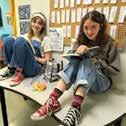




Preschoolers love big words—as any parent who has heard his four-year old obsess over dinosaur names can attest.



A Tyrannosaurus rex and a pterodactyl. An acute scalene and an obtuse isosceles triangle. A lanceolate and a deltate leaf.
From botany to zoology, from physical geography to geometry, 3- to 6-year-olds at LePort Montessori develop an astounding vocabulary and unmatched love for learning the fascinating world all around us.
This is how Montessori makes young scientists.









By Gemma Alexander
No matter how much we want to protect our children from everything dangerous and scary, climate change is too important to keep hidden, and we are going to need our kids’ help to turn things around. But how do we teach our kids about climate change without scaring them to death?
At KidsQuest Children’s Museum, the answer is play.
“Play is how children connect to everything that they do. It’s how they process their world and understand things,” says Jamie Bonnett, Director of Education at KidsQuest Children’s Museum in Bellevue.
Environmental values and behaviors begin to develop around ages 5 to 8, and children aren’t developmentally ready to process the dangerous impacts of climate change before the third or fourth grade. But long before addressing melting ice caps and species extinction, it helps to lay a foundational worldview, that Richard Louv in “Last Child in the Woods” describes as “a world in which children and nature are reunited and the natural world is more deeply valued and protected.”
Caretakers of Wonder
Parents can — and should — start laying that foundation when children are small.
“The biggest thing is making sure that we’re not scaring children, and making sure that we are giving them concrete things to do and interact with,” says Bonnett. KidsQuest is a member of the national Caretakers of Wonder project, supported by the Institute for Museums & Library Services (IMLS).
“The project is really about how and where to start to address such a daunting topic in a way that is age-appropriate and making it life-enhancing,” says Bonnett. The project is developing environmental education methods geared to younger children that are designed to build compassion, climate knowledge, agency in pursuing solutions and hope for the future of our climate.

Compassion
“We want to make sure that we are connecting children with nature and giving them a chance to wonder,” says Bonnett. Exposure to many different life-forms, and interacting with them, can inspire that wonder. It doesn’t have to be charismatic megafauna such as whales and elephants. Humble creatures such as worms and bees are just as important to ecosystems, breaking down organic waste and pollinating plants. And they are just as effective as educational tools for small children.
“We talk about taking care of the Earth, that we are caretakers who are here to help. And we talk about other helpers, how the bees and the worms help us,” Bonnett concludes.
At KidsQuest, red wiggler worms are kept in a compost bin in the Bellevue Mercantile area on the second floor.
“We bring food waste into the museum and feed those worms, and when we’re feeding them, we bring the worms out of their case, show the kids what they look like and then put them all back in,”
Bonnett explains. At any time, children can look inside the glass to watch the worms crawling around in food waste and turning it into compost.
An outdoor honeybee hive from Rainy Day Bees can be safely viewed up close from inside, thanks to the clever placement of the hive’s entrance near a window. For hands-on learning, KidsQuest has added a honeycomb exhibit to the museum’s Bellevue Mercantile area, where infographics teach families facts about bees, and children can use bee puppets to pollinate toy flowers. Rent Mason Bees is managing the mason bee boxes in the parking lot and along the outdoor Chickadee Trail. Because solitary mason bees do not have a queen to protect, and do not produce venom, they present very little risk of stings. Plus, “mason bees are really rad pollinators,” says Bonnett.
Agency and action
Teaching kids that they have agency as helpers and caretakers helps to inoculate them against the feeling of being overwhelmed that many people experience in the face of oversized crises such as climate change. In the Recycle Rebuild room at the museum, children are exposed to the concepts of material life cycles. Something as simple as collecting crayon nubbin bits in a jar to
melt down into crayon pucks for large outdoor art projects gives them a concrete example of how they can make another choice, besides simply using things up, throwing them away and creating waste. Asking the questions, “What was this and what else could it be? How do we make sure it makes it to a place where it can be recycled into something else instead of just thrown away?” helps children start thinking critically about the choices they make.
Summer play
This summer, KidsQuest has several opportunities for children to learn through play in the outdoor Sticks + Stones Gallery.
“Kids may get a little bit messy, and that is just okay,” says Bonnett.
• Arts & Otter Pops: On Tuesdays, Thursdays and Sundays in July and August, kids can enjoy free icy treats while they make some cool art by playing with water and natural materials during activities such as painting rocks and making plant prints.
• Waterfest: On July 31, the Sticks + Stones Gallery will transform into a wading pool with boats and natural play materials. Waterfest is a chance to splash in puddles of joy (Okay, it’s water, but the kids are going to love it.). Remember to bring sunscreen, a towel and a change of clothes.

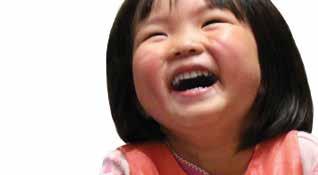


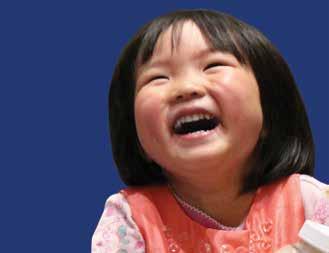



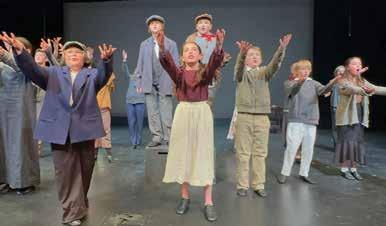


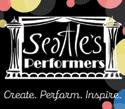


continued from page 21
• Mud Play Day: On August 28, kids get down and dirty while making potions, stews and other creations with colored water and clay. Bathtime and laundry are inevitable, but the memory of uninhibited play in the mud is priceless.
For small children, the backyard or the neighborhood park are as full of mystery and wonder as Yellowstone National Park. Make a point of going outside with your child and encouraging them to explore and observe. Notice birds and butterflies and ask your child questions about what they see. When your child comes home with a pocket full of rocks and treasures, don’t throw them out (at least not right away); take time to appreciate their discoveries and identify them. What kind of tree did the leaf come from? What animal made that shell? What should someone have done with that piece of plastic instead of throwing it on the ground?
As children reach school age, you can begin to talk more about ways they and your family can make a difference. Simple things such as wasting less and recycling contribute to your child’s budding environmental awareness and sense of responsibility.

“The biggest thing is not to lead with fear and not to get overwhelmed with the adult feeling that you have to do everything. Small changes do matter,” says Bonnett. She suggests picking one thing you can all do as a family to become more sustainable and making it a part of your life before asking, “Now what else can we do?”
“Lead with a sense of nature and what brings you joy. Then use that to move forward,” reminds Bonnett. ■
Seattle-based freelance writer Gemma Alexander focuses on the intersection of parenting and the arts.

Sponsored by

At KidsQuest Children’s Museum, our mission is to create learning through the power of play and exploration that connects children to their communities and the world. As a hands-on museum, designed for children ages 0 to 10, KidsQuest encourages playful learning with an emphasis on science, technology, engineering, art, and math (STEAM). There is something for everyone to explore with over 25 innovative exhibits, plus an outside space perfect of building and playing music. KidsQuest offers early learning classes, summer camps, school-age workshops, free art and science programs, and special events for the whole family. A love of learning starts here when you experience the power of play!
Tantrums are typical during the toddler years — just think of a child throwing a dramatic fit at the grocery store. But tantrums can carry on through childhood. Tweens and teens may angrily crumple up their homework or stomp away and slam a door.
Tantrums happen when kids are not able to express their complex emotions through words. Instead, they communicate with dramatic behavior. These displays of emotion are more apt to happen when kids are overwhelmed, frustrated, tired or hungry.
So, besides remaining calm, how should parents respond to tantrums? Depending on the child’s age and the circumstances, it’s generally wise to ignore the behavior in the heat of the moment if possible. Kids usually need some time and space before they’re ready to talk things out. Then, we can listen carefully, show empathy and validate their feelings. And we can offer some help to solve the problem that’s causing them such frustration.
Meltdowns are upsetting and tiring for everyone. So, it’s worth the effort to equip kids with the skills to prevent them. Help your child notice and name their feelings. Work with them on some ways to calm themselves as they feel their emotions start to build. Young children might take slow, steady breaths, relax their bodies and count slowly to 20. Older kids can learn to identify their triggers, so they can use some self-calming techniques before they’re overcome by emotions.
School-age kids and teens may benefit from a Distress Tolerance Box. This is

a box or container filled with objects that will help soothe and distract a child when they have strong negative emotions. It can contain things like comforting photos, art supplies, puzzles, a favorite plush animal, tactile toys, scented lotion, an inspiring quote or an encouraging note.
Keep in mind that angry behavior may indicate that your child is reacting to something. Whatever’s bothering them may be having a greater impact than you realize, or it might be something you don’t even know about. So make time for meaningful talks. Encourage them to open up and share what’s on their mind. Then, be an active and compassionate listener.
And don’t forget the basics. Ensure your child is well rested, fueled with nutritious food, hydrated and getting plenty of physical activity. Be a role model when
you yourself feel frustrated; remain calm and take care to express yourself in a clear and respectful way.
Also remember that out-of-control behaviors can indicate more serious emotional-health issues. If you have concerns, talk with your child’s doctor.
SCAN TO LEARN MORE
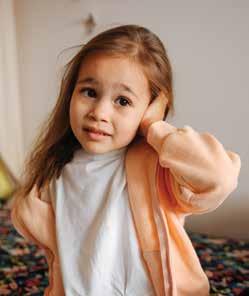
Swimmer’s ear is an infection of the skin in the outer ear canal. It can happen after a child swims, when trapped moisture allows bacteria to grow. The main symptom is ear discomfort. With mild cases, a child may complain of itchiness or a clogged feeling. More serious cases can be very painful, and it may hurt to touch the outer ear or chew food. While some kids never get swimmer’s ear, others may be prone to it. To prevent this problem, be sure your child removes water from their ears after swimming — by using the corner of a towel or by shaking their head. A few drops of a mixture of half white vinegar and half rubbing alcohol in the ear after swimming can also help prevent infection. If you suspect your child has swimmer’s ear, see a doctor, who will examine and clean the ear canal and may prescribe antibiotic drops.
SCAN TO LEARN MORE
Most insect bites and stings are easy to treat at home, and kids can usually go back to their regular activities right away. But sometimes, a child can have a serious reaction after being bitten or stung. Be sure you know what to do.
Call 911 if your child:
• Has a hard time breathing.
• Passes out or is very weak.
• Has had a bad reaction to a bite or sting in the past.
• Develops bumps or a rash in areas away from the bite or sting.
• Suddenly starts vomiting or having stomach pain.
If it hurts or itches at the area of the bite or sting:
• The insect’s stinger may still be in the skin. Remove it by gently scraping the skin with the edge of a credit card or driver’s license.
• Clean the bite or sting with warm, soapy water.
• Apply ice or a cold pack over the area to reduce swelling.
See a doctor if:
• You have trouble getting the stinger out.
• The bite becomes warm or hot, or red and very painful.
If your child has a bad reaction to insect bites or stings, ask their doctor about an emergency care kit and/or shots to prevent future bad reactions.
SCAN TO LEARN MORE

Water beads are super-absorbent gel beads. Before being exposed to water, they can be as small as the tip of a pencil. However, they can grow up to 1,500 times their original size. While they’re usually sold for use in vases and gardens, these soft, squishy beads are sometimes marketed as children’s toys or for sensory play or tactile therapy. Water beads are potentially very dangerous, and they should not be in any home where young kids live or even visit. If ingested, the risks to children include choking, poisoning and life-threatening bowel obstructions that require surgery. From 2021 to 2023, Washington Poison Control reported a 383% increase in water bead-related cases affecting children 5 years of age and younger. If you suspect your child has ingested a water bead but their breathing is not affected, call Poison Control right away at 1-800-222-1222. If someone is choking on a water bead, call 911 immediately.

SCAN TO LEARN MORE
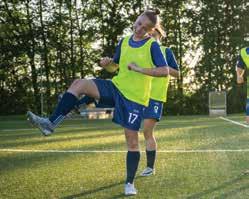
Warm-ups are important to help prevent injuries and improve performance for athletes of all ages. Exercises like jumping jacks, arm circles, side shuffl es, walking lunges and squats are a great way for your child to help their body get ready to practice or compete in their sport. These activities, known as dynamic warm-ups, help your child slowly increase their breathing rate and heart rate as they stretch their muscles through a range of motion. Warming up this way increases blood fl ow to the muscles and lubricates the joints, preparing the body for increased movement. Encourage your child’s coach to provide time for warming up, focusing on the parts of the body most used in their sport. Then, be sure to get your young athlete to the fi eld, court or pool with plenty of time to take part in these warm-ups.
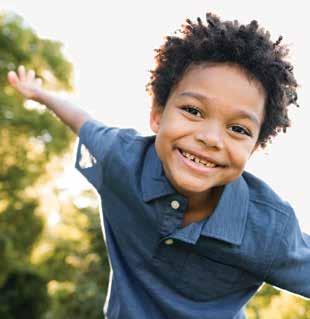
Suicide is the second-leading cause of death for people ages 10 to 24. Rates of suicide in young children and teens have been going up in recent years.
Young people everywhere of all races, ethnicities, sexual orientations, gender identities and income levels die by suicide. The good news is that we can all work together to help prevent it. Start by learning to ask the question: “Are you thinking about suicide?”
Remember, thoughts of suicide are more common than you might think, and it’s important to recognize when a child or teen may be struggling.
Sometimes it’s hard to tell the difference between changes that commonly happen as children age versus changes that are warning signs of mental health concerns. That’s why it’s so essential to ask your child or teen if they’re thinking about suicide even if you don’t notice any warning signs.

It can be an uncomfortable topic to talk about. While it might feel hard to ask, it is crucially important. Research shows that asking about suicide does not give someone the idea to die by suicide, and it does not increase their risk of suicide. In fact, talking about it creates a safe space for children and teens to get information.
Asking directly about suicide can be the difference between life and death. It offers relief to someone who may be struggling and helps them feel noticed and heard.
Visit this page for guidance on words you can use to ask the question and how to support your child, no matter their answer.
Check out this public service announcement for encouragement to ask your child if they’re thinking about suicide:
Scan QR Code
Sign up today to receive our free eNews 6 times a year!

Please check our website for the latest information. Scholarships are available. If you would like to ask about a scholarship, use the contact information for the class you’re interested in to connect with the registrar.
PARENTING CLASSES
Autism 101
Watch the lecture, in English or Spanish, at seattlechildrens.org/autism101.
Conversations About Autism
Learn more or view past sessions at seattlechildrens.org/ conversationsaboutautism.
Babysafe
Learn more, view dates and register at seattlechildrens.org/classes.
Finding Mental Health Care in Washington State: A Class on Where to Start
This class is available in English and Spanish. Learn more, watch a recording, view dates and register at seattlechildrens.org/classes.
Behavior Basics
Learn more about this on-demand, self-paced class for parents and caregivers of children ages 5 to 12 with disruptive behaviors at seattlechildrens.org/classes.
Your Child With Disabilities Is Turning 18
Learn more and watch the class in English, Spanish or Vietnamese at seattlechildrens. org/classes.
Youth Mental Health First Aid
Funded by the King County MIDD Behavioral Health Sales Tax, supporting behavioral health and recovery. Learn more, view dates and register at seattlechildrens.org/classes.
CHILD, PRETEEN AND TEEN CLASSES
Better Babysitters
Choose virtual or in-person class. Learn more, view dates and register at seattlechildrens.org/ classes.
The Chat Workshop Series (Is Puberty Weird?; Body Basics; More Body Basics; Crushes, Consent, and Other Conversations; Our Sexual Selves)
Learn more, view dates and register at seattlechildrens.org/classes. See a trailer for The Chat at greatconversations.com.
Sibshops for Siblings of Children With Special Health and Developmental Needs
Learn more, view dates and register at seattlechildrens.org/classes.
Free Car-Seat Checks
• Weekly, on Tuesdays, in Bellevue
• Saturday, Sept. 21 and Saturday, Oct. 19 in Seattle
• Check online for dates in Federal Way
Learn how to safely secure your child in the car. Child-passenger safety experts will check your child in a car seat, booster seat or the seat belt and answer any questions you may have. Car-seat checks are by appointment only. Learn more and register for an appointment at seattlechildrens.org/ carseatchecks.
Free Virtual Car-Seat Checks
King County Certified Child-Passenger Safety Technicians are offering free virtual car-seat check appointments via video-chat platforms. For more information, email Laura Miccile at laura.miccile@kingcounty.gov or call 206-477-8664.
South County Fire and Safe Kids Snohomish County offer free virtual car-seat classes. Registration is required. Visit southsnofire.org/ community-programs/classes/car-seats.
Free Education and Safety Device Events
Learn about the importance of safe firearm storage, receive a free lock box or trigger box, and get trained on how to properly use them. Children are welcome at the events, and for those 18 and up, we will offer one free device per person. Learn more at seattlechildrens.org/firearmsafety.
Family Fun
Run of Hope 5K Run, 3K Walk & Kids’ Dash Sunday, Sept. 22, 10 a.m. in Seward Park, Seattle
Rally your family and friends and register to take part in the 16th annual Run of Hope event, benefiting Cancer Research at Seattle Children’s. Can’t make it on the day of the event? Register for the virtual option. Learn more at runofhopeseattle.org.

About Good Growing
Heather Cooper is the Editor of Good Growing, which is produced four times a year by the Marketing Communications Department of Seattle Children’s. You can find Good Growing in the January, April, July and October issues of ParentMap and on our website seattlechildrens.org. For permission to reprint articles for noncommercial purposes or to receive Good Growing in an alternate format, call 206-987-5323. The inclusion of any resource or website does not imply endorsement. Your child’s needs are unique. Before you act or rely upon information, please talk with your child’s healthcare provider.
© 2024 Seattle Children’s, Seattle, Wash.
SEATTLE CHILDREN’S HOSPITAL
Regional Clinic Locations
Bellevue
Everett Federal Way
Olympia Tri-Cities
Wenatchee
Primary Care Clinic
Odessa Brown Children’s Clinic
Hospital Numbers 206-987-2000 866-987-2000 (toll-free)
Online Resources
Visit seattlechildrens.org for:
Child health advice
Good Growing newsletter
Doctor Finder
On the Pulse and The Autism Blog Medical condition information
Health and safety information
Ways to help Seattle Children’s Research Institute information
An Ages & Stages guide to the fibs, tall tales and other untruths kids tell
By Amber Guetebier
“Nope, wasn’t me,” he said, the chocolate still visible at the corner of his mouth. Though I was teasing (I really didn’t care who ate the last slice of birthday cake), my then-4-yearold son looked at me with deep sincerity as he lied. I shrugged it off as something all kids do — lie, or at least tell what we call “harmless lies” or “fibs.” But it got me wondering, should I have been more concerned? And how do I handle it if he tells a bigger lie, about something more important? (Flashes of reckless teen parties dance before my eyes.)
As with all things parenting, there are dozens of variables. Every parent and every kid is different. So I dug in, did some research and talked with some experts about why kids lie at different ages and what, if anything, we should do about it.
It turns out lying isn’t necessarily a bad thing in young kids. “A child’s ability to lie signals important developmental milestones, such as theory of mind and perspective-taking,” says Meg Tibayan, parent and cofounder of Bright Sprouts. Toddlers tend to lie or exaggerate, but it’s pretty typical. Kristie Tse, a licensed mental health counselor (LMHC) and founder of Uncover Mental Health Counseling, tells parents, “Young children often lie due to their active imaginations and inability to distinguish fantasy from reality.” Kids at this age may lie or exaggerate because they want something to be true, not because they are intentionally lying.
respond

If your toddler tells a lie, reiterate the truth, but don’t shame or punish the child. For example, if your child says they didn’t eat the cake, respond, “Oh, how strange there is chocolate on your face.” You can also make statements that speak to the heart of the matter, such as “I see you like chocolate cake” rather than phrasing it as a question that might trigger a lie. The goal is to start a foundation of open communication without harsh judgment so that children feel safe telling the truth.
Similar to toddlers, children at this age can lie for pretty innocent reasons. “Generally, younger children, around ages 2–4, might lie to avoid punishment or gain something desirable; these are often impulsive and poorly thought out,” Tibayan explains. Lies are usually in response to a question like “Did you take Jaxon’s toy?” and are not premeditated.
How to respond
gentle approach by
truth is to counteract the power of the lie, and be clear about the importance of telling the truth. Avoid putting kids in a position where they might immediately deny something by stating facts instead of asking them a question.
Early elementary (ages 5–8)
The early elementary years are also full of big milestones, which means lies can start to get a little more complex. “As children grow older, from ages 5 to 8, their lies become more intricate and serve social purposes, such as preserving self-esteem or fitting in with peers,” Tibayan says. At this stage, lies include ways to avoid consequences or to gain approval. The lies tend to be simple and may increase if a child fears punishment.
How to respond
Avoid shaming kids who are caught lying, but remind them why they don’t need to lie. Be













continued from page 27 honest and direct with them. Tibayan suggests that fostering communication and working to understand underlying motives are key. “Revolutionizing the conversation around lies as simply ‘good’ or ‘bad’ can create a more positive and productive environment for our young learners,” she says.
Upper elementary (ages 8–10)
At this age, children may lie about things such as homework, chores or behavior at school because they want to avoid a consequence. While they still want parental approval, children at this age are also looking to their peers more often for approval. Kids often respond with what they think others (parents, friends) want to hear, even if that’s not the truth.
“Children this age are also beginning to grasp the concept of fudging the truth to spare someone’s feelings,” says Brianna Grant, LCSW, registered play therapist supervisor (RTP-S) and clinical director at TN Voices.
How to respond
“Clearly explain why honesty is important and express understanding that making mistakes is part of growing up,” says Tse. “Encourage them to share the feelings and fears that led to the lie. Reinforce the value of trust by showing appreciation when they do tell the truth. This balanced approach nurtures a sense of security and promotes honest communication.”
The goal is to foster a conversation that values the truth and allows the child to come to you at any time with that truth. For example, you can say, “Are you sure that is how it happened?” which opens the door to let them think about it. In the moment they may not be ready, but making sure children will feel they can come to you at a future time and tell the truth without fear is critical to creating a safe place.
Middle school (ages 11–14)









Ah, middle school. It’s one of the trickier stages to navigate, so it’s no surprise that lies come with the territory. While kids at this age may still be lying to avoid consequences, there are other factors brewing. Grant reminds parents that “social standing and peer relationships are important, so lies may be centered around trying to impress their friends or stretching the truth to gain independence.” Tweens (and teens) may also lie just to avoid discussion. If they are struggling with their grades, they may be exhausted and frustrated and don’t want to have yet another discussion. At this age, kids are processing a lot of feelings, and it’s not always possible for them to articulate this. At this age, most kids aren’t lying arbitrarily or without thought.
They are aware of lies and consequences and are using them to avoid a situation they perceive would be worse if they told the truth.
If you know they are lying to you (or when you find out), try to get to the root of the problem. Have a frank discussion. While boundaries are important at this age and clear consequences should be laid out and followed through with, it’s also critical to establish with your tween the trust that they can tell you the truth without fear.
“When encouraging truthful conversations with children, I like to say, ‘It’s okay to tell me anything, and I won’t get mad. I’m here to help.’ Another effective statement is ‘Everyone makes mistakes. What matters is that we talk about it and learn from it.’ This reassures them that honesty is valued over perfection and opens the door for more open and honest communication,” Tse advises.
“Adolescents are trying to find their own ways in the complex world, and if lying has become the norm for them, it can be somewhat like a habit at that point,” says Melissa Tract a Long Island–based LCSW working with children, teens and young adults through her practice, Mindful with Mel.
Tract reiterates that teens can lie for a host of reasons, including avoiding punishment and trying to fit in or impress others. Teens can also lie as a way of getting more care from parents, a pattern I know well from my own kids: I’d push boundaries, get no response, so I’d push them even more, sometimes to dangerous levels. While the instinct may be to consider kids “old enough to know better,” teens still have very young, developing brains, and punishment without explanation or discussion may result in, you guessed it, more lies.
ParentMap is proud to highlight local area nonprofits making a difference in our community as part of our Giving Together campaign.
All babies deserve to have their basic needs met, but for struggling families that can be a challenge. That’s where WestSide Baby steps in. In partnership with the community, we collect and distribute diapers, clothing, car seats, and other children’s essentials to families throughout western King County. WestSide Baby partners with human service agencies, early learning centers, food banks, healthcare providers, and more to reach families and provide reliable access to these vital resources. With community donations and support, WestSide Baby distributed 2.7 million diapers to thousands of families throughout King County last year. Westside Baby works toward ensuring each child is equipped with the basic items they need to grow into healthy, happy, and resilient members of our community.
Learn more about our service model, volunteer opportunities, accepted items, and other ways you can contribute at Westsidebaby.org.
Teenagers are still kids, so it’s important to view their actions with compassion while still being clear about the importance of telling the truth. “Active listening and open communication are crucial in making children feel safe to tell the truth. This approach is key to their emotional development and overall well-being,” Tse tells us. Appropriate consequences (removing devices, restricting social activities) can be employed, but they should be backed up with a conversation about the underlying reasons for the lie. Teenagers may take some time to get there, but keep the door open for an ongoing discussion. The last thing you want is a teen to shut down and not talk to you. ■
Amber Guetebier is a freelance writer and editor and a mother with a penchant for pirates, plants and books, not necessarily in that order. Visit her at Writhing Ink.



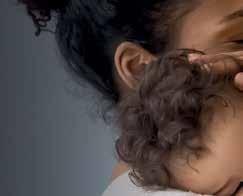



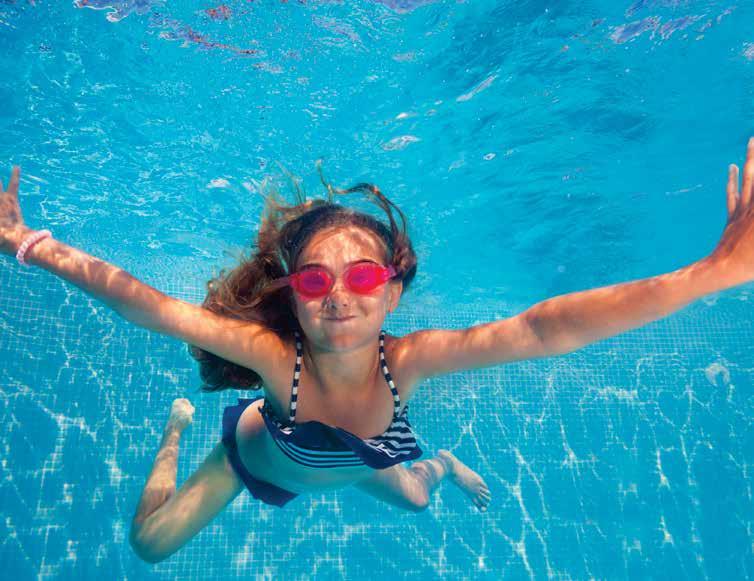



Downright messy play spots for kids of all ages
It’s a lot easier to embrace messy activities with your kids when they don’t take place in your home. And not just because it lightens your load. Let the experts do the planning, setup and, most importantly, the cleanup! At the following nine places to get messy, all your kids need to do is show up ready to exercise their creativity and have fun.
KidsQuest Children’s Museum, Bellevue
All of my kids, ages 3–7, love splashing, pouring, constructing dams, experimenting with various objects in the spinning Water Vortex (also known as the tornado), and dumping the water in the Water Gallery, an ongoing exhibit at KidsQuest Children’s
FAMILY FUN OUT + ABOUT




continued from page 31 Museum. While water play isn’t necessarily messy, it does involve some extra planning.
KidsQuest has additional opportunities for messy play through its summer programming:
• Experiment at the Super Science Station, which offers STEAM activities. (Mondays through Fridays, June 17–Aug. 28 at 10:30 a.m. and 2:30 p.m.)
• Cool off with art and a frozen treat at Arts and Otter Pops. (Tuesdays, Thursdays, and Sundays 2–3 p.m. in July and August)
• Get some fresh air while baking up some mud pies at the Mud Play Day. (Wednesday, Aug. 28, 10 a.m.–4 p.m.)
• For extra water fun, splash in puddles at the first Waterfest. (Wednesday, July 31, 10 a.m.–4 p.m.)
My kids’ favorite weekly “messy” programs, Play with Paint and Play With Clay, will return this fall.

Location: 1116 108th Ave. N.E., Bellevue
Cost: These activities are included with admission. Admission for babies 1 and younger are free; guests 1 year old and older are $16 per person. You can also reserve a free pass through your King County library card. Discounted admission is also available.
Good for ages: Infant–10
Pro tip: If you have time to explore multiple exhibits at the museum, save the messy activities for last. We often save the Water Gallery as our final activity and wear either rain boots or sandals that can get wet. Pack extra clothes for a dry ride home.
Free play at Seattle PlayGarden, Seattle Seattle PlayGarden lives up to its slogan, “A garden for everyone.” Kids of all abilities and their family and friends are invited to play together in the nature-rich environment, guided by friendly staff during the free play sessions. Free play programming includes seasonally themed activities, such as gardening, cooking classes, music classes, dance movement activities,
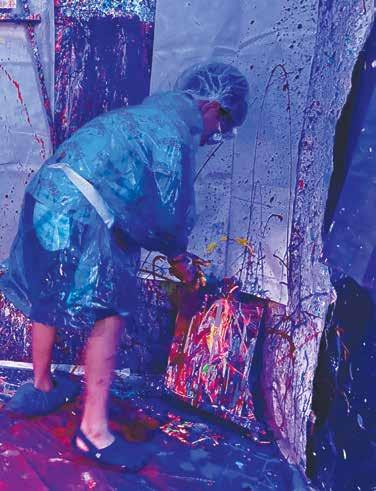






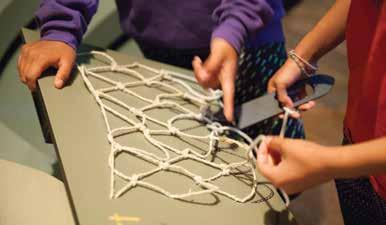


continued from page 33
art, construction and more. Summer free play is held on Fridays and Saturdays from 9:30 a.m. to 1:30 p.m. in July and August.
Embrace the value of muddy play in the mud kitchen, trails and garden. Enter the Wild Zone, where kids may be inspired to look for bugs, dig or play hide-and-seek. Make a visit to the wheelchair-accessible tree house and the water feature, say hello to a few farm animals, and explore all that this special park has to offer.
The PlayGarden’s inclusive and completely fenced-in 1-acre park is open year-round, daily from dawn until dusk, even during preschool hours. However, it is closed to the public during summer camp hours, Monday–Thursday, 9:30 a.m.–1:30 p.m. during July and August.
Location: 1745 24th Ave. S., Seattle
Cost: Free
Good for ages: All ages and abilities
Parent tip: While the PlayGarden and its free play sessions are inclusive of everyone and open to the public, one might consider going somewhere else if it’s busy and you do not have a member of your group who has a disability.
Splatter art at Wicked Rae’s, Seattle
Step into an art studio experience that encourages mess! Splatter art is just what it sounds like — spraying, flicking, splattering and squirting paints. The freedom to create while making a mess from floor to ceiling (and we did!) had us losing track of time and lost in creativity. My kids’ favorite part of splatter art was smashing and spraying paint-filled water balloons over their canvases. We all walked away with paint-covered ponchos and our own canvas masterpieces. I had just as much fun as my kids did!
Location: 3220 California Ave. S.W., Suite 128, Seattle
Cost: Packages start at $35 per person per session
Good for ages: 2 and older, and adults; solo or as many as 6 people per session
Parent tip: Even with shoe coverings, ponchos and shower caps, some washable paint inevitably gets on your skin, clothing and shoes. Wear dark clothing and pack extra clothes just in case. Wear easy-to-clean shoes such as Crocs, sandals or Native Shoes.
Wicked Rae’s also offers themed Parents’ Night Out events (ages 6–15), various art and acting workshops,
Sensory Exploration Art Classes (ages 2–7) and outdoor art classes.
Messy-time fun, a sensory experience at The Heybrook, Kirkland
Allow your little one to explore new textures and materials through sensory play. The Messy-time fun class begins with a themed circle time and 35–40 minutes of sensory play. We visited during the Dinosaur Dig week, and some babies ate a meal’s worth of the “dinosaur mud” — made of chocolate pudding mix, corn starch, whole milk and water. This sensory-rich class is not just a fun activity. Babies and toddlers socialize, as do the caregivers and parents. This class fosters connectivity and community, especially for its regulars.
Materials can be placed in a sealable plastic bag for younger babies to manipulate safely or for kids with allergies. All materials used in the sensory play are taste-safe, nontoxic, and just might make a delicious “snack.”
Location: 10415 N.E. 37th Circle, Kirkland
Cost: First Heybrook class is free; drop-in rates are $35 per class, or you can purchase a punch card or membership for savings Good for ages: Infant–3
Parent tip: Babies who have been introduced to solids (versus younger babies) seem to get the most out of this class since they are able to freely explore the materials, tastes and textures. Bring extra clothing, wipes and/or a towel, and extra clothes for yourself if you plan to go somewhere besides home afterward. For kids who don’t like to get as messy, The Heybrook offers a “squeaky clean sensory time” for a mess-free environment that is still rich in sensory input.


Drop-off classes at FrogLegs Cooking School: Kirkland, Seattle, Redmond Save your kitchen floors and your patience by allowing FrogLegs Cooking School to stretch your child’s mind, creativity and kitchen skills. Drop-off class themes are ever changing, catering to various interests and skill levels.
My kids took the Groovy Tie Dye Sweets and Treats class. The instructors, who had whimsical names like “Ms. Firefly” and “Ms. Ginger,” made the experience educational, fun and inspiring. They mixed teaching proper techniques with dashes of fun, such as when they demonstrated how to make “sugar waterfalls.” They even made the baking time fun by offering some activities such as coloring and an invitation to play in






















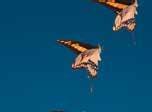


















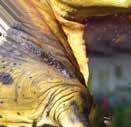


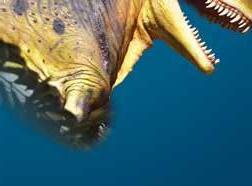


continued from page 35
their play kitchen (how fitting!). My kids walked away with a bit more kitchen confidence, a new way to crack eggs and some yummy treats to share with the whole family.
Aprons are provided, but some of the ingredients might make it home on your child’s clothing. Besides the treat of having a couple of hours to yourself during these drop-off classes, your little ones might be inspired to hone their kitchen skills at home and cook for you someday!



Locations: 501 Market St., Kirkland; 2643 N.E. University Village Ln., Seattle; 7430 164th Ave. N.E., Suite B240, Redmond in Redmond Town Center
Cost: $65 and up, per child
Good for ages: 4 and older
Parent tip: The Redmond and Seattle locations also sell to-go kits, such as cookie-decorating kits, take-andbake kits, cookie care packages and catering packages. The University Village location scoops up edible cookie dough. These are great options if you can’t make it to a class or want to host your own party at home.
Toddler Tuesdays at Infinity Farm, Issaquah
Every Tuesday (9:30–11 a.m.), rain or shine, Infinity Farm opens its gates for Toddler Tuesday, when families get to feed the farm animals, engage in structured activities, dig in the sandbox, and climb on the farm’s nature playground and tree house. Expect to get your boots dirty as you roam the farm and meet new friends. Each month the themed structured activities rotate. We’ve enjoyed painting crafts, making giant bubbles and exploring sensory bins. It’s always a bonus when there are baby animals to celebrate (and snuggle!) and occasional food and drink vendors.
Location: 16523 Issaquah-Hobart Rd. S.E., Issaquah
Cost: $30 per car
Good for ages: 1–8
Parent tip: Reserve your spot online as

these Toddler Tuesdays often sell out. We always wear rain boots and bring a towel and extra clothes, just in case. On your way out, check the farmstand for fresh eggs and other local goods for purchase. It accepts cash and Venmo payment.
The Slime Factory, Bellevue
Allowing slime in your home can be controversial because of the mess factor, but two things are certain: Kids love slime and it’s fun to make! The Slime Factory offers you a fun, educational experience while avoiding the invasion of slime into your home — if you can convince your kids to leave their creations behind. Persuade them by suggesting they contribute their works of slime art to the Slime Wall (think Seattle’s Gum Wall, only cleaner). My kids witnessed the chemical reaction before their eyes as they mixed their creations. Each child gets to customize their two slimes by adding glitter, charms and scents like marshmallow and strawberry. While I used to cringe at the idea of slime in our home, I have grown to appreciate how slime entertains my kids for hours.



The Russian School of Mathematics is an award-winning, afterschool math enrichment program. We use the rigorous study of mathematics as a vehicle to develop our students’ math fluency, intellect, and character, empowering them for life.
-Johns

continued from page 37
Location: 3929 Factoria Square Mall S.E., D4, Bellevue
Cost: $25 per person on weekdays, $34 per person on weekends
Good for ages: 4 and older; children younger than 14 must be accompanied by an adult Parent tip: If you allow slime in your house, you may need this slime-removing tip for most clothing items: Scrape off as much slime as possible with a dinner knife, apply white vinegar and let it sit for 10 minutes. Use a soft toothbrush to scrub off any slime remnants and once all slime is removed, launder as usual.
Redmond Art Works, Redmond
Creating art can be a family affair at Redmond Art Works. Even if you’re not sure what you want to create, reserve an art table in the studio for as many as six people, and studio staff will present your creative options upon your arrival. Choices may include painting pottery, a kid’s crafting station, hand-building ceramics clay, pottery painting, painting workshops, resin pouring and more. Degrees of messiness vary by class, and you may want to bring extra clothes for little ones.
Location: 6825 176th Ave. N.E., A-110, Redmond
Cost: $15 or more per person
Good for ages: All
Parent tip: Look out for the weekly Creative Toddlers class, expected to return this fall. Creative Toddlers, designed for kids ages 18 months to 4 years old, features stations for making art, coloring and sensory play, such

as kinetic sand or slime. Each month has a new theme, and crafts change weekly.
Visit a beach or explore tide pools with the experts, various locations
Exploring tide pools is a quintessential Pacific Northwest activity, and with our mild winter temperatures, kids can play at the beach year-round. Pack your sand toys, a beach blanket and towels, and visit a beach to dig in the sand. You can hope that most of the sand will remain at the beach, but I always have grainy reminders of fun beach days in my car.
If exploring tide pools is your activity of choice, check out Seattle Aquarium’s Beach Naturalist program. Volunteer beach naturalists are stationed at various Seattle-
area beaches at very low tides during the summer and on a few winter nights, to help you safely explore and learn about the marine life of Puget Sound.
Location: Some of our favorite local beaches for playing and digging are Lake Sammamish State Park in Issaquah, Golden Gardens Beach in Seattle, Alki Beach in West Seattle, Juanita Beach Park in Kirkland, Luther Burbank Park on Mercer Island, Meydenbauer Bay Park in Bellevue and Idylwood Park in Redmond.
Beach naturalists are stationed on scheduled days at Carkeek Park, Constellation Park, Dash Point State Park in Federal Way, Des Moines Beach Park, Golden Gardens Park, Lincoln Park, Olympic Sculpture Park pocket beach, Redondo Beach and Saltwater State Park

in Des Moines, and Seahurst Beach in Burien. All of these are also great beaches to explore on your own during low tide.
Cost: Free. Remember your Discover Pass if parking in a Washington state park.
Good for ages: All ages
Parent tip: Pack extra clothes, towels and hand sanitizer, and don rain boots or protective sandals. For a safe and impact-free experience, follow these tide-pooling guidelines: Gently touch creatures using only one finger. Observe animals where they are. Don’t remove anything from tide pools (except trash). Walk carefully to avoid stepping on creatures. ■
Krista is a Seattle-area mom of three. Since having her third child, she has taken a break from Clinical Social Work to stay home. She is determined to teach her children her love of biking, skiing and the beach.

Bloedel Reserve on Bainbridge Island is a place where kids of all ages can explore the wonders of Nature.



Bainbridge Island | Open Tuesday–Sunday Timed tickets are required for admission | bloedelreserve.org




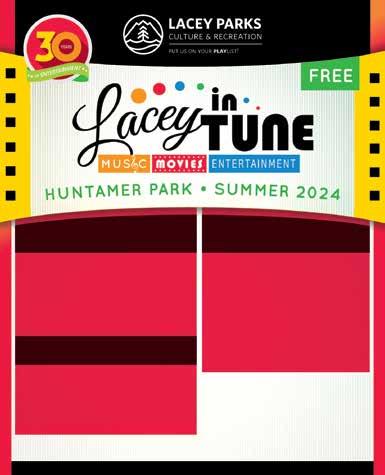














































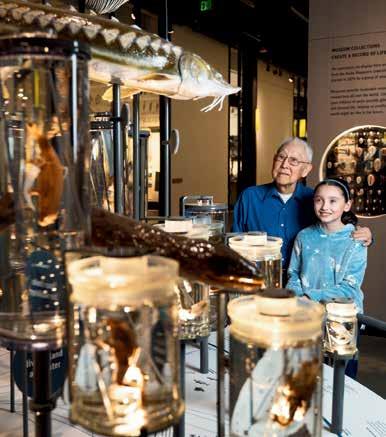

By Krista Tsai
Snoqualmie is only 28 miles east of Seattle, yet it feels like a mini getaway with its proximity to mountains, snow sports and wildlife. Snoqualmie Falls, the traditional cultural property of the Snoqualmie Tribe, draws more than 2 million visitors each year. The Boeing Classic golf tournament and filming locations for the television series “Twin Peaks” also attract visitors.
The Snoqualmie Tribe remains an important part of history and culture today; its members have lived in this area since time immemorial. Snoqualmie was once known for logging, agriculture, a functioning power plant and the falls and the railroad that you can visit at the Snoqualmie Depot.
This once sleepy town has exploded in population, especially with the development of the sprawling Snoqualmie Ridge neighborhood. My family is drawn to the


mountain backdrops, wildlife, nature trails, engaging playgrounds and the small-town feel of historic downtown Snoqualmie.
Choose your level of hiking challenge to marvel at Snoqualmie Falls. The upper observation viewing areas are less than 200 feet from the parking lot. The lower viewing areas are accessible via a steep 1.4-mile out-and-back trail, which includes some stairs; skip the climb via the lower falls parking lot.
Bike, hike or ride horses along the 32-mile Snoqualmie Valley Trail. Pedal 100 feet above the creek on the Tokul Trestle. In addition, the city of Snoqualmie maintains more than 20 miles of trails.
Step into the historic Snoqualmie Depot at the Northwest Railway Museum, where kids can play with the train tables and listen during a free story time. Purchase tickets to the Train Shed Exhibit Hall or ride a historic train for a two-hour adventure. Halloween, Santa Train and Day Out With Thomas trips are all popular excursions for local families.
Play at some of our favorite playgrounds. Centennial Fields playground, which opened this spring, is inclusive of all abilities. Zoom down the double zip line at Fisher Creek Park. Train enthusiasts will appreciate the playground at Riverview Park, steps away from downtown. Cool off at Snoqualmie Community Park’s new splash pad, anticipated to open this summer.




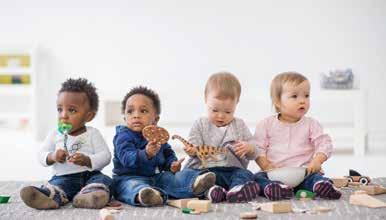

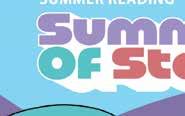









continued from page 41
Stroll downtown and find the perfect gift at the family-owned Carousel shop. Peruse the upscale children’s resale shop, Mini Treehouse. Modern floral arrangements and house plants abound at Down to Earth Flowers & Gifts.
If you’re in the Snoqualmie area in the early morning or around twilight, stop at Meadowbrook Farm to admire the elk herd that has a long history of grazing there.
And don’t miss the fun free events each month, such as Big Truck Day, Movies and Music in the Park, and Snoqualmie Days.
Hungry after all of your activities? Downtown Snoqualmie has several family-friendly options. Head to the Snoqualmie Falls Brewery, to dine inside or alfresco. Sip local wine and dine with a view of Mount Si at Sigillo Cellars’ tasting room. The Bindlestick brews locally roasted coffee, pours local beer and serves light fare. The family-owned Snoqualmie Ice Cream will reopen its Snoqualmie location soon, scooping up locally inspired flavors.
For a more upscale experience, secure a reservation at The Restaurant at the Salish Lodge & Spa, owned by the Snoqualmie Tribe. Its “Honey from Heaven” service is the sweetest touch: honey from the lodge’s own bee hives is dripped from above on warm house-made biscuits. Locally sourced ingredients, a quality kids’ menu and waterfall views make this restaurant a destination for both tourists and locals. ■


Krista is a Seattle-area mom of three. Since having her third child, she has taken a break from Clinical Social Work to stay home. You can follow her family’s adventures, travel tips and travel hacking on Instagram: @mamabearintheair.
By Jackie Freeman
Summer isn’t over yet. Send your kids off to their next camp session with healthy lunches that are easy to prepare and will keep them full during long days of play.
Pizza buns
These look like cinnamon rolls, but inside you’ll find cheese, sauce and all your favorite pizza toppings. Simply make (or buy) pizza crust, add toppings, roll it into a log, slice it and bake. Head to Simple as That for the recipe and details.
Turkey and pesto pinwheels
These baked pinwheels use packaged dough, making them quick to pull together. There are endless options for fillings for this simple and satisfying lunch solution; just mix together your child’s favorite flavor combo. You’ll find all the info you need at The Scramble.
Lunch box kabobs
For this fun and easy idea, the blog It Is a Keeper takes a ham and cheese sandwich and turns it into a bite-size and easily packable meal. Cherry tomatoes keep the meat and cheese from sliding off the skewers and add a colorful veggie component to lunch.
Healthy lunch box spring rolls
There’s no cooking involved in preparing these fresh spring rolls by Sugar Free Mom. Dip the rice wrappers in warm water and fill them with your favorite veggies (or fruit). Served with a peanut dipping sauce, the roll’s rainbow of colors will be a hit with the kids. If peanuts are a no-go, swap out the peanut butter for almond butter.
Tuna-stuffed cucumber boats
Some kids need to eat gluten-free, but they still crave their tuna salad sandwich. When you need to skip the bread, try serving your tuna in a crunchy cucumber canoe instead. Add a tortilla chip “sail” and a carrot “rudder” and this boat is ready to launch.
Cinnamon ants on a stick
While your kids are at summer camp, there’s a good chance they’ll encounter some ants at lunch. Allrecipes has put a positive spin on that nuisance with its crunchy and creamy cinnamon ants on sticks, a twist on the traditional ants on a log. ■
Jackie Freeman is a recipe developer, food stylist, cookbook author, culinary tinkerer and mama.
Follow us on social media @parentmap

Discover the latest parenting tips, tricks, adventures, activities and more!







Check out many more happenings online at parentmap.com/calendar
By Julie Dodobara

Many locals would proclaim July as the sweet spot in Seattle-area summers. The days are long, hot and full of sun. I’m not one of those people. I prefer some shade or AC, please. No matter how you prefer your temps, I assure you we’ve got the goods in terms of things to do out there — fairs, farms, fests, parades and performances — there is no shortage of planned or spontaneous fun to be found.
� Treat your fam to an outing to the big top tent to see the captivating Shoestring Circus, a Bellingham-based troupe of talented performers displaying stunning feats of balance, daring and comedy. Shows take place Friday–Sunday, June 28–30 and Thursday–Sunday, July 4–7 in Olympia’s Swantown. Tickets are $32 for teens and adults, $16 for kids ages 3–12. Ages 2 and younger enter free.
� Happy birthday, America! Celebrate the Fourth of July with all the spectacle and merriment you can handle in nearly every town in the Pacific Northwest. Do your plans include staying up late to witness
the skies light up with fireworks? If that’s not compatible with your family’s weeknight bedtime, do not fret — there are plenty of daytime fests to attend as well.
� There’s nothing quite like the old-school fun of the King County Fair, a summertime staple. It’s the “oldest fair west of the Mississippi!” Highlights include barrel racing, carnival rides, lumberjack shows and rodeo — not to mention the yummy fair food. Find all this fun at the Enumclaw Expo Center, Thursday–Sunday, July 11–14. Tickets cost $5–$10; some activities have an additional fee.
� Catch a ride on a train car pulled by everyone’s favorite steam engine, Thomas the Tank Engine, as he comes alive at Snoqualmie’s Northwest Railway Museum during this summer’s Day Out With Thomas: The Bubble Tour. In

addition to Thomas, your train enthusiasts can meet Sir Topham Hatt and enjoy fun with bubbles, live music and photo ops. Don’t delay! Book your tix now for the following dates: July 12–14, 19–21 and 26–28. Tickets cost $28–$32; babies younger than age 1 ride free.
� Summer festival season has arrived! If you’re a bike fan, Redmond Derby Days is the one for you. In addition to activities such as parades, carnival rides, entertainment and a drone show, the heart of this fest is bicycle racing which takes place at the velodrome. Kids also get the chance to try out riding on the track. Events take place Friday–Saturday, July 12–13.
� The focus of the Ballard SeafoodFest is its maritime history, so it should come as no surprise that it features a salmon bake. The celebration also includes live entertainment, kids’ carnival games and tasty food truck fare. Plan a visit Friday–Sunday, July 12–14, and arrive hungry.
July 4 | Thursday
Fourth of July fests
Various locations
� The public is invited to experience Native American food, music, arts and dancing at the annual Seafair Indian Days Powwow, which brings together local Native tribes and those from across the continent to celebrate and showcase their tribal traditions. Events take place Friday–Sunday, July 19–21 at Daybreak Star Indian Cultural Center in Discovery Park. Free entry, although donations are welcome.
� Summer fests and fun keep coming in the month of July. This one is especially for the kids, with crafts, live music, games and best of all — giant inflatables! The Maple Valley Kids’ Festival takes place at Lake Wilderness Park on Saturday, July 20, 10 a.m.–2 p.m. It’s free, and your kids will have a blast.
� What says summer more than sand castles? You can build your own or head to the scenic shores of Snoqualmie River, where McCormick Park hosts Duvall’s Sandblast Festival of the Arts, to check out expert creations made by a
July 11–14
King County Fair Enumclaw
July 21 Sunday
Seafair Chinatown Parade
Seattle
master sand carver. You’ll also find music, art and food. Join the free festivities Saturday–Sunday, July 20–21.
� Line the streets of Seattle’s Chinatown–International District for the annual Seafair Chinatown Parade and catch
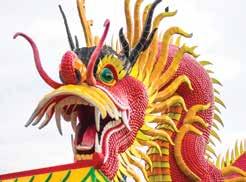
place Sunday, July 21, 7–9 p.m.
� Get ready for some toetapping fun — it’s a barnyard dance at Auburn’s Mary Olson Farm! Enjoy barbecue and bluegrass at this historic site, where your crew can get a peek at the local family farm

a glimpse of the 100-footlong dragon and the Chinese Community Drill Team among the participating performance groups. What better way to experience this vibrant neighborhood and its rich history and culture? The parade takes
life of the late 1800s and meet donkeys and other barnyard friends. And it’s all free. Friday, July 26, 5–7 p.m. Preregister.
� The Bellevue Arts Museum welcomes kids for free hands-



















PUBLIC CRUISES
• Family Treasure Cruise
1 hour interactive pirate adventure for all ages!
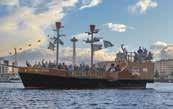
• Adult Pirate Party Cruise (21+)
1.75 hour party cruise wWith games and great music!

• Plan Your Own Voyage


Call to book Queen Anne’s Revenge for your private event up to 48 guests. Birthday Parties • Family Reunions • Holidays
• We also offer Corporate Events and Team Building, as well as adult cruises for Moms and Dads!
or (206) 639-8689

SPONSORED EVENT

continued from page 45
July 13
Summer Celebration
City of Mercer Island’s Summer Celebration has something for everyone! From the community parade to the fireworks show, don’t miss this day of fun! mercerisland.gov/ summercelebration
on art projects, games and activities at the youthoriented portion of the award-winning arts-and-crafts summer staple, BAM Arts Fair. Kids’ highlights include a chalk art station, live performances and ongoing craft station. The fun takes place Friday–Sunday, July 26–28.
� Soak up the art, dance, food and rich cultural diversity of India at the free, all-ages Ananda Mela noon–9 p.m. on Saturday–Sunday, July 27–28 at the Redmond City Hall campus. Kiddie fun from inflatables to face painting is also part of this joyful Indian festival, the largest of its kind in the Pacific Northwest.

� The delightful Kitsap Forest Theater invites families for a unique, kid-friendly outdoor theater experience. This season’s second show is the Broadway adaptation of “Cinderella” by Rodgers and Hammerstein. Hum along to your favorite songs while surrounded by towering trees. Weekend performances take place July 27–August 18 in Bremerton. Tickets $10–$23; ages 5 and younger free.
� Need to cool off? Get splashing at KidsQuest Children’s Museum during its inaugural Waterfest, where kids are welcome to dive into puddles and get wet. Don’t forget to bring sunscreen, towel and an extra change of clothes! The fun takes place Wednesday, July 31, 10 a.m.–4 p.m., and is part of the museum’s special summer programming, which runs through August. Included with admission. ■
Julie Dodobara is ParentMap’s calendar editor.























